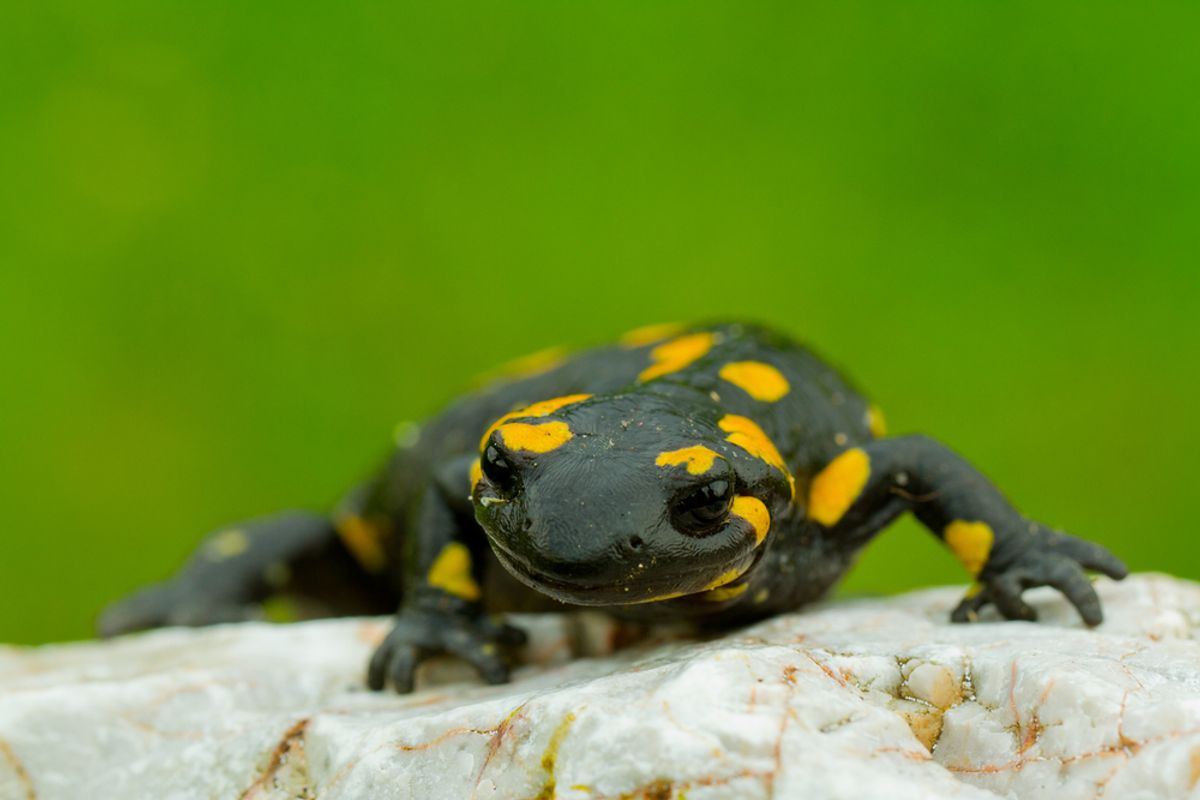Salamanders ain't what they used to be. Six species of the amphibian living in the Appalachian Mountains, researchers say, are smaller -- by 2 to 18 percent compared to their size in the 1950s -- and they think it's because of climate change.
"This is one of the largest and fastest rates of change ever recorded in any animal," said author Karen R. Lips. And, she adds, it's clearly coordinated with the fastest warming of the climate in Earth's history. The researchers, who published their findings in the journal Global Change Biology, believe the hotter, drier weather is forcing the salamanders to expend more energy, faster, in order to survive. To do so more efficiently, they're starting to shrink. Here's more from Nature:
Lips’s analysis draws on salamander specimens collected between 1950 and 2007 by Richard Highton, an ecologist at the University of Maryland who has since retired. In 2011–2012, Lips and her colleagues resampled 78 of the sites originally surveyed by Highton, which stretch over 767 kilometers of varied elevation in the Appalachians. They also included measures they made in 2009 at sites in Great Smoky Mountains National Park in Tennessee.
Lips originally sought to determine whether a possible decline in salamander populations first reported by Highton was caused by Batrachochytrium dendrobatidis, a fungus that causes deadly infections in amphibians. When she found that fewer than 1% of the animals she studied were infected with the fungus, Lips began to suspect that climate change could be a factor.
Lips and her team found that reduced size was greatest at lower latitudes, areas experiencing increased temperature and decreased rainfall over the 55-year period — although no single factor could explain the declines in body size.
To determine how climate conditions could affect salamander survival, study co-author Michael Sears, an ecological modeller at Clemson University in South Carolina, created a biophysical model simulating salamanders’ daily activity using temperature and moisture data from the National Weather Service. He found that metabolic activity for two sizes of salamander — modelled on the relatively tiny P. cinereus and the much larger P. glutinosus — increased between 7.14% and 7.86% over the five decades. Unless salamanders eat more to compensate for a faster metabolism, they will get smaller, says Lips.
Other researchers, it should be noted, take issue with the study's methodology, contending that it overstates the role of climate change. “Other potential factors—such as long-term air pollution, habitat changes and forest-structure changes due to nonindigenous insects—weren’t considered in the analyses,” Ken Dodd, a population ecologist at the University of Florida in Gainesville, told Nature. In other words, it's tough out there for salamanders. If it does turn out to be that they're flexible enough to adjust to new conditions, Lips said, "it gives us hope that some species are going to be able to keep up with climate change."



Shares